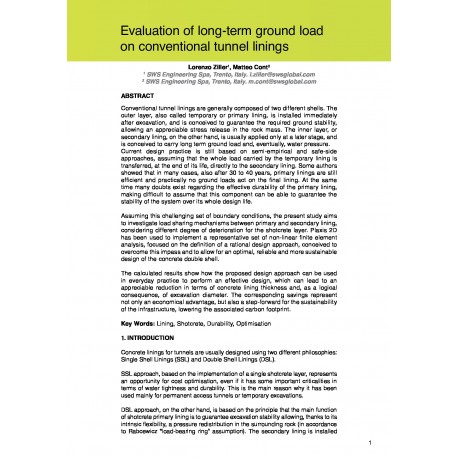Cart
0
0
No document
0,00 €
Total
Document successfully added to your shopping cart
Quantity
Total
There are 0 items in your cart.
There is 1 item in your cart.
Total documents
Total shipping
To be determined
Total
Search & filter
Search for a publication
Search & filter

Evaluation of long-term ground load on conventional tunnel linings
3134_evaluation_of_long_term_gro
Conventional tunnel linings are generally composed of two different shells. The outer layer, also called temporary or primary lining, is installed immediately after excavation, and is conceived to guarantee the required ground stability, allowing an appreciable stress release in the rock mass. The inner layer, or secondary lining, on the other hand, is usually applied only at a later stage, and is conceived to carry long term ground load and, eventually, water pressure.Current design practice is still based on semi-empirical and safe-side approaches, assuming that the whole load carried by the temporary lining is transferred, at the end of its life, directly to the secondary lining. Some authors showed that in many cases, also after 30 to 40 years, primary linings are still efficient and practically no ground loads act on the final lining. At the same time many doubts exist regarding the effective durability of the primary lining, making difficult to assume that this component can be able to guarantee the stability of the system over its whole design life.Assuming this challenging set of boundary conditions, the present study aims to investigate load sharing mechanisms between primary and secondary lining, considering different degree of deterioration for the shotcrete layer. Plaxis 2D has been used to implement a representative set of non-linear finite element analysis, focused on the definition of a rational design approach, conceived to overcome this impass and to allow for an optimal, reliable and more sustainable design of the concrete double shell.The calculated results show how the proposed design approach can be used in everyday practice to perform an effective design, which can lead to an appreciable reduction in terms of concrete lining thickness and, as a logical consequence, of excavation diameter. The corresponding savings represent not only an economical advantage, but also a step-forward for the sustainability of the infrastructure, lowering the associated carbon footprint.



